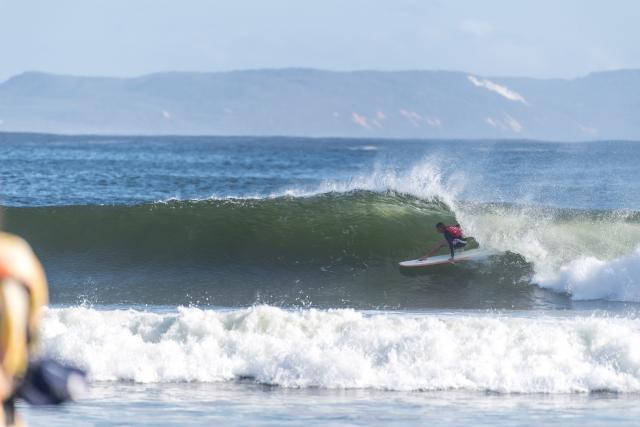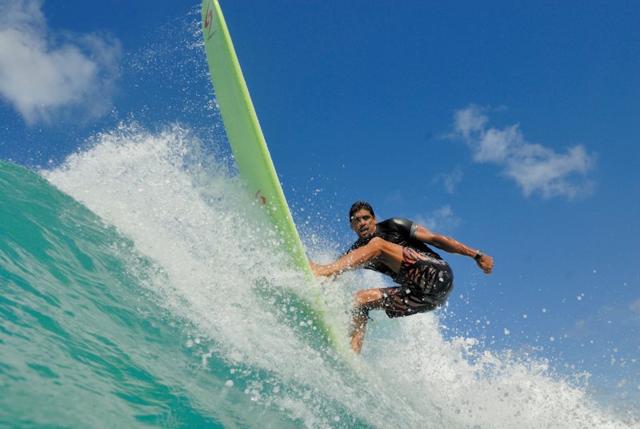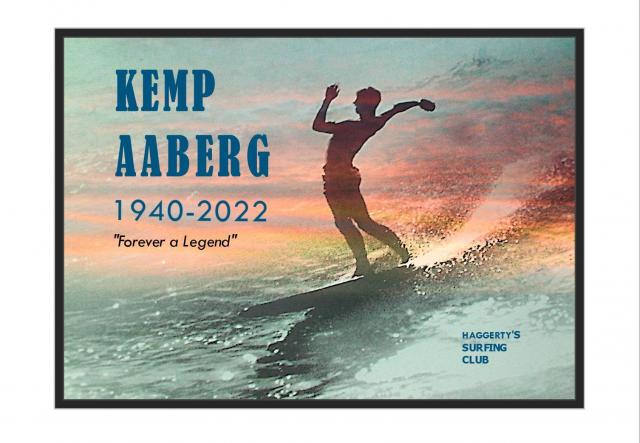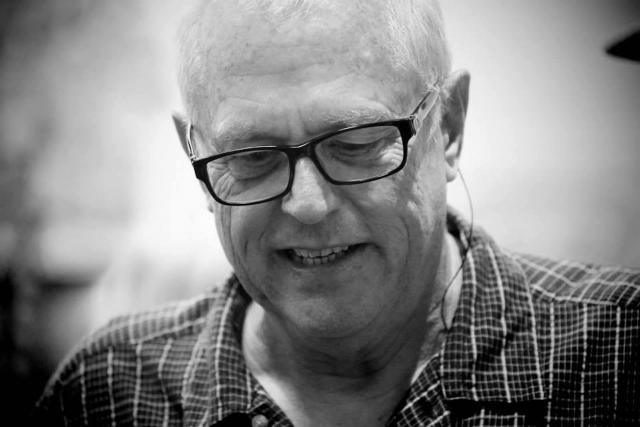With a $10,000 WSL regional qualifier and several other money events already locked in, the 2023 Noosa Festival of Surfing is certain to attract the best longboarders from around the world, but what is causing the most interest and speculation is the possibility of a throwback “high performance” pro event that would see many of the dinosaurs of longboarding back in the contest jersey.
High performance or “HP” made a return to the Noosa Festival in a small way last year but the rumour mill has it that veteran longboarder Andre Derizans will bring his HPFC (High Performance Freestyle Championship) tour to Noosa with a $30,000 open event.
Brazil-born, Hawaii-domiciled Andre, who prefers his nickname Spydah these days, was a festival regular back in the early days when the ASP pro events were judged on HP criteria, and over the past couple of years he has been at the forefront of bringing HP back to international competition, tagging his HPFC events onto longboard festivals in Hawaii, Brazil and parts of Central America.
For those who might need reminding, in the longboarding context, high performance basically meant performing shortboard manoeuvres on a longboard, although there was no denying that its techniques worked well in bigger surf.
Great longboarders like Josh Constable, Bonga Perkins, Duane DeSoto and Taylor Jensen won their world titles with HP surfing, but by around 2010, largely thanks to Joel Tudor’s Duct Tape Series, the focus had begun to shift to more traditional surfing.
For me that shift was made clear around that time when I was on the judging panel for the Deus Nine Foot and Single traditional surfing event in Bali.
Josh Constable and Harrison Roach were the standout surfers in the final, held in challenging conditions with a pounding shorebreak. Josh took on the shorey with huge lip bashes every wave, while Harry smoothly slid around sections, and pulled out before the crunch. We gave it to Harry.
Since then the WSL has pretty much embraced the traditional criteria for longboard surfing, and while the majority of top contenders have adapted their surfing accordingly – Taylor Jensen and UK’s Ben Skinner being the classic examples – other tail-stompers and lip-bashers have not. Australia’s two-time world champ Harley Ingleby has already put up his hand for Noosa ’23, and if Spydah and his backers can really come up with this whopping prize purse, we can expect a stampede of other HP purists to come out of retirement, like our own Josh Constable and maybe Brett White, and internationals Jefson Silva, Phil Rajzman and Piccolo Clemente.
Add Beau Young and Rusty Keaulana to that list and we could really get the HP party started!
Festival management has also reaffirmed its commitment to a sustainable and gender-equal event, so the stage has been set for a great next edition. As ever, all we need is waves.
Visit noosafestivalofsurfing.com for competitor entries and further information.
Milestones
A sad week for surfing as we lost two of the true renaissance men and style icons of our culture, quiet achievers whose names may not be known to surfers post-baby-boom, but whose contributions helped define modern surfing.
Kemp Aaberg, described in a Surfer Magazine profile as “possibly the nicest guy to ever set foot on the sands of Malibu”, finally succumbed to Parkinson’s Disease in Santa Barbara, aged 82.
Although he came to surfing relatively late, by the mid-1950s he was becoming recognised as a true stylist. This was reinforced when, still a teenager in 1958, he starred in Bruce Brown’s first surf movie, Slippery When Wet, and inspired young surfers up and down the California coast to try to copy his trademark soul arch turn. In fact when John Severson started Surfer in 1960, he used the image of Kemp’s turn as the magazine’s first logo.
Kemp and younger brother Denny (featured here in the Big Wednesday story last week) were great musicians and well as surfers, but while Denny focused on his own version of surf-tinged soft rock, Kemp dabbled in classical and flamenco guitar, spending 1972 studying both in Spain. On his way home he stopped off in Australia and spent six months teaching social studies and PE on the NSW mid-North Coast, where he became a regular in the lineup at Crescent Head on good days.
A guy who seemed to excel at everything he tried, Kemp became a top distance swimmer and triathlete in his middle years, and only stopped his fierce training regime as the disease overtook him. He surfed and played guitar well into his 70s and performed both with style and grace.
Like Kemp, Art Brewer put his stylish stamp over everything he created in more than five decades as “surfing’s most naturally gifted photographer”. Unlike the upright athletic Aaberg, Art was a shambling giant of a man whose gruff exterior sometimes hid his big and generous heart.
Of the three great Californian surf photographers who defined the ‘70s and ‘80s – Dan Merkel, Jeff Divine and Art Brewer – Art’s work stood out for its originality and its ability to transcend the sport. In the latter part of his career he worked in fashion and portraiture with considerable success and became a darling of the art world, exhibiting at some of the world’s leading galleries.
When the Gramercy Gallery in New York gave him a 40-year retrospective, the notes read: “Often described as ‘the court painter’ for the world’s surfing elite, Art Brewer is known for his mastery of the numerous technical and physical challenges involved in surf photography and the strikingly expressive quality of his images, which some have described as ‘portals to a vastly improved universe’.”
Art Brewer, friend and colleague who died in Los Angeles last week after complications from a liver transplant, would have laughed his head off at that BS.












